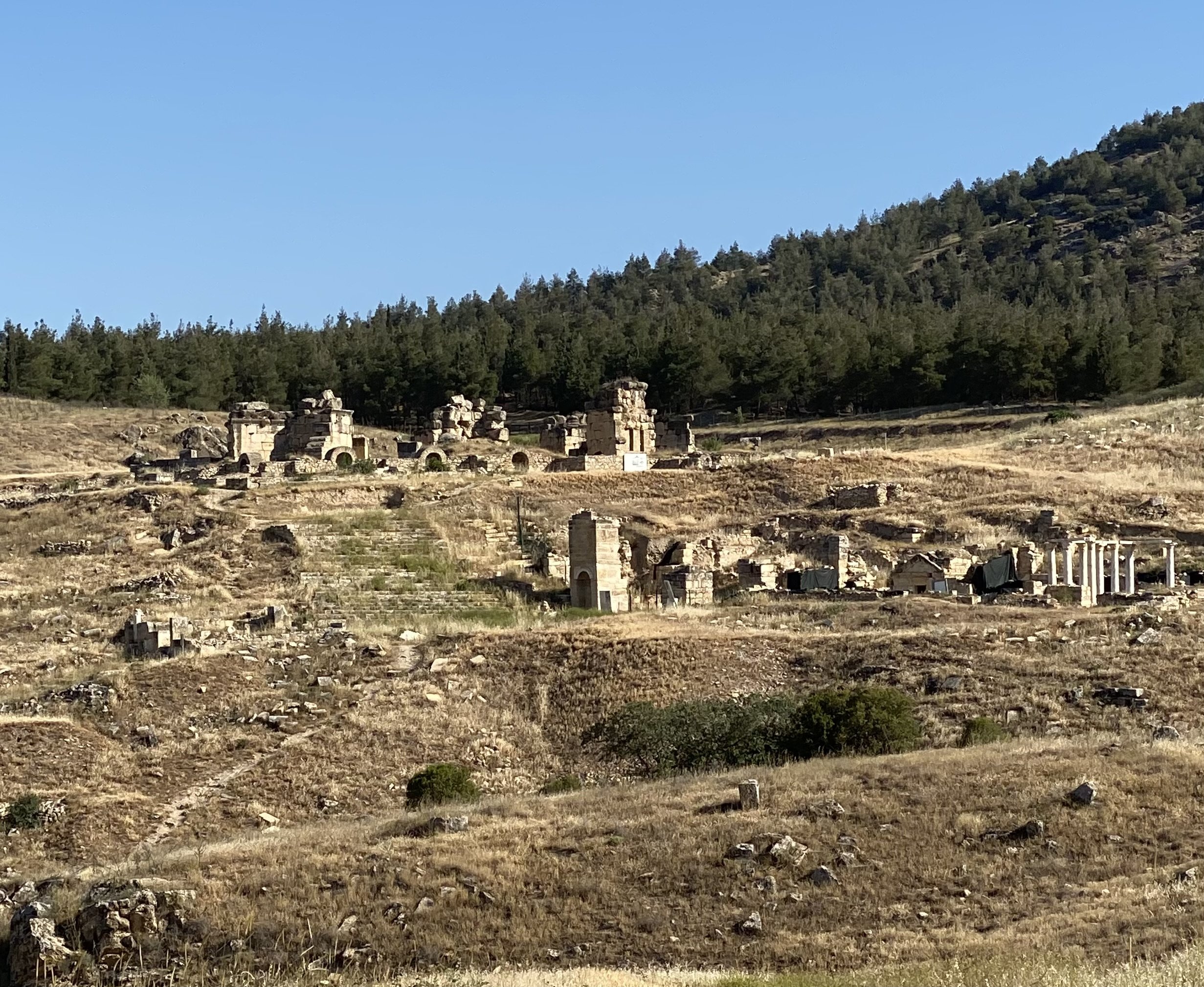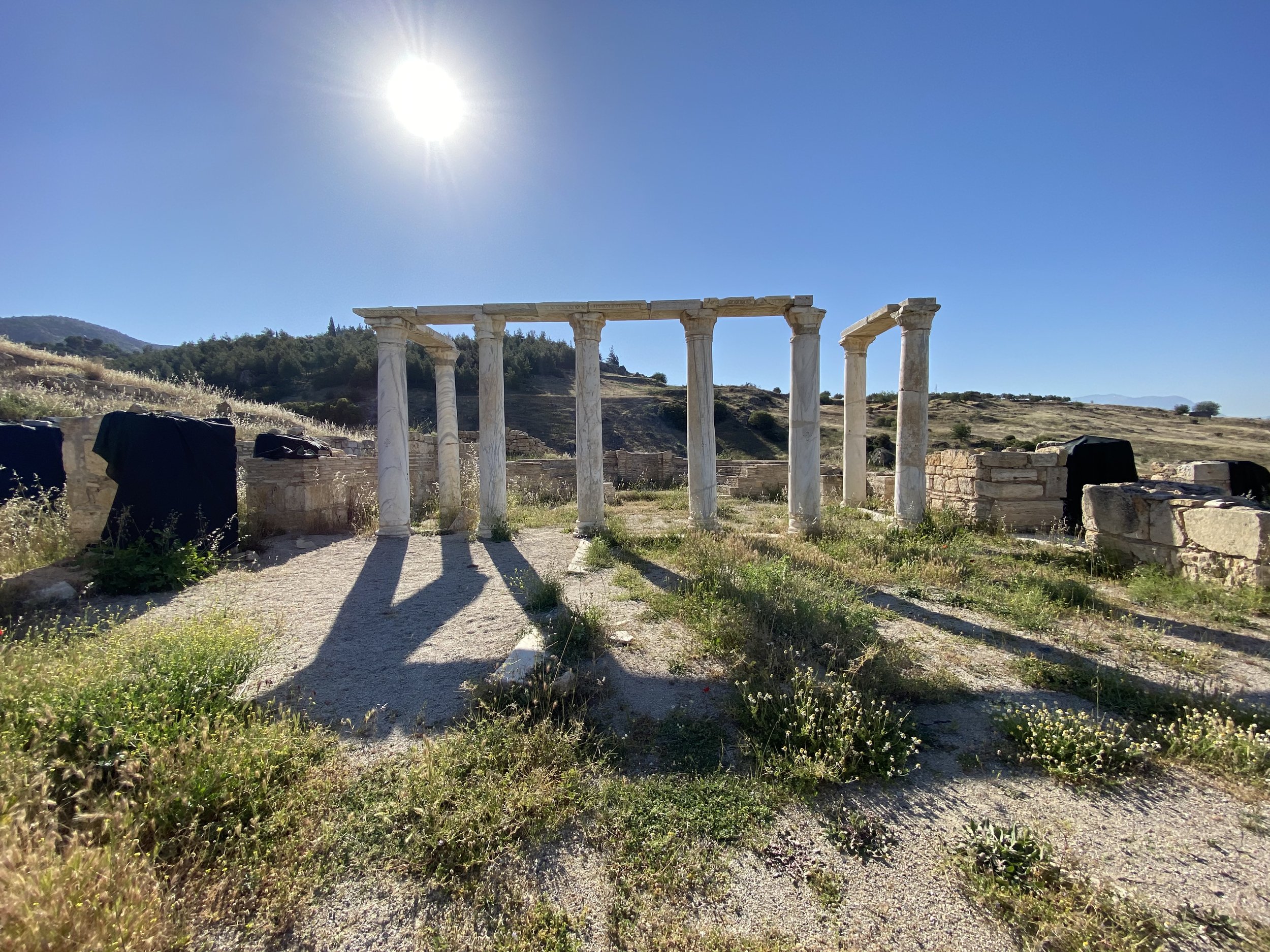Martyrium of St. Philip, Hierapolis Turkey
The next day Jesus decided to go to Galilee. He found Philip and said to him, “Follow me”. Now Philip was from Bethsaida, the city of Andrew and Peter. John 1:43-44
High on a hill to the west of the Northern city gate of Hierapolis, among some tombs, is the martyrium and church of St. Philip. The church dates to 4th or 5th century AD and the martyrium to the 5th century AD. They were an important early Christian pilgrimage site. Tradition holds that Philip was crucified upside down at a spot on the hill above the city, during the Domitian persecution. The martyrium was built around that site with the church slightly lower on the hill. There is a pilgrim road that begins at the bottom of the hill, in the city, near what was the temple of Apollo. The road ascends the hill, crosses a bridge, and a long flight of steps leads to the martyrium.
Philip’s tomb was incorporated into the church structure. Philip’s remains were moved to the Church of the Apostles in Constantinople after the church burned in the 6th century AD.
The Martyrium has an octagon shape with a large central area that was covered with a dome. Around the central area are 8 small chapels. Around the outside of the martyrium were 28 small pilgrim rooms. Christian symbols engraved on the archways and pillar bases can still be seen. We’ve visited the site twice - one time was dark and rainy and the other bright and sunny. In any weather it’s a beautiful spot with a spectacular view of Hierapolis and Lycus Valley.
Martyrium (upper terrace) and Church (lower terrace) of St. Philip, Hierapolis Turkey




























